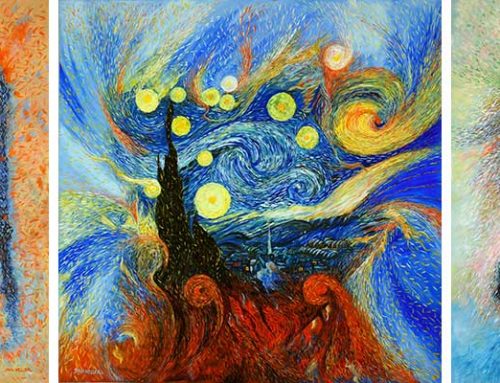Allegory definitions
Quite a few definitions exist, that describe the full meaning of the noun “allegory” as it pertains to arts. In Greek, the word means “other” and “to speak in public”. Here are a few explanations:
“…a story, poem, or picture that can be interpreted to reveal a hidden meaning, typically a moral or political one”. The synonyms are parable, analogy, metaphor, symbol, emblem.
“…expression by means of symbolic fictional figures and actions of truths or generalizations about human existence” – Merriam Webster Dictionary
“…a symbolic fictional narrative that conveys a meaning not explicitly set forth in the narrative” – Encyclopedia Britannica.
“…a representation of an abstract or spiritual meaning through concrete or material forms; figurative treatment of one subject under the guise of another” – Dictionary
“…when the subject of the artwork, or the various elements that form the composition, is used to symbolize a deeper moral or spiritual meaning such as life, death, love, virtue, justice etc.” – Tate Gallery.
“…a form of extended metaphor, in which objects, persons, and actions in a narrative, are equated with the meanings that lie outside the narrative itself. The underlying meaning has moral, social, religious, or political significance, and characters are often personifications of abstract ideas as charity, greed, or envy”.
What is an allegory painting?
Probably the best definition: it is a story with two meanings, a literal meaning, and a symbolic meaning.
Of the definitions above, perhaps the closest to a clear understanding is the one offered by Tate Gallery, UK. According to their definition, painters use elements in their painting intending to teach a lesson or express a deeper meaning.
In simple words, an allegory in a painting means that figures or other composition elements, stand for an idea which suggests a deeper or parallel meaning. The meaning of the allegory is sometimes communicated through the use of symbolic figures. Associations occur in the viewer’s mind, thus conveying a meaning beyond the literal representation.
Artists have used allegories in their paintings for centuries. Largely because allegories can simplify the process of conveying abstract concepts in ways that are easily understood. Painters using this genre tell us a story, which sometimes can only be visually expressed by using metaphors and symbols.
However, to understand the deeper meaning the viewer must first identify the figures in the composition. Only then can a viewer link with the message. But many times, the hidden clues are not easy to identify, and the connection can not be made.
Notable allegory paintings
Sandro Botticelli “Primavera”, a painting in which Botticelli has used images of Greek gods and goddesses to express the coming of spring.
Giuseppe Arcimboldo “Winter”, a painting in which is depicted as a head that is composed of elements from nature such as broken branches from a tree and other faded subdued colors, invoking a feeling of winter.
“The art of painting” – Johannes Vermeer
“Melancholia” – Albrecht Dürer, thought to be a drawing about the melancholy afflicting many artists.
Suggested reading
“Artwork 101: Understanding paintings” – artgreeT Blog
“Narrative art” – artgreeT Blog






